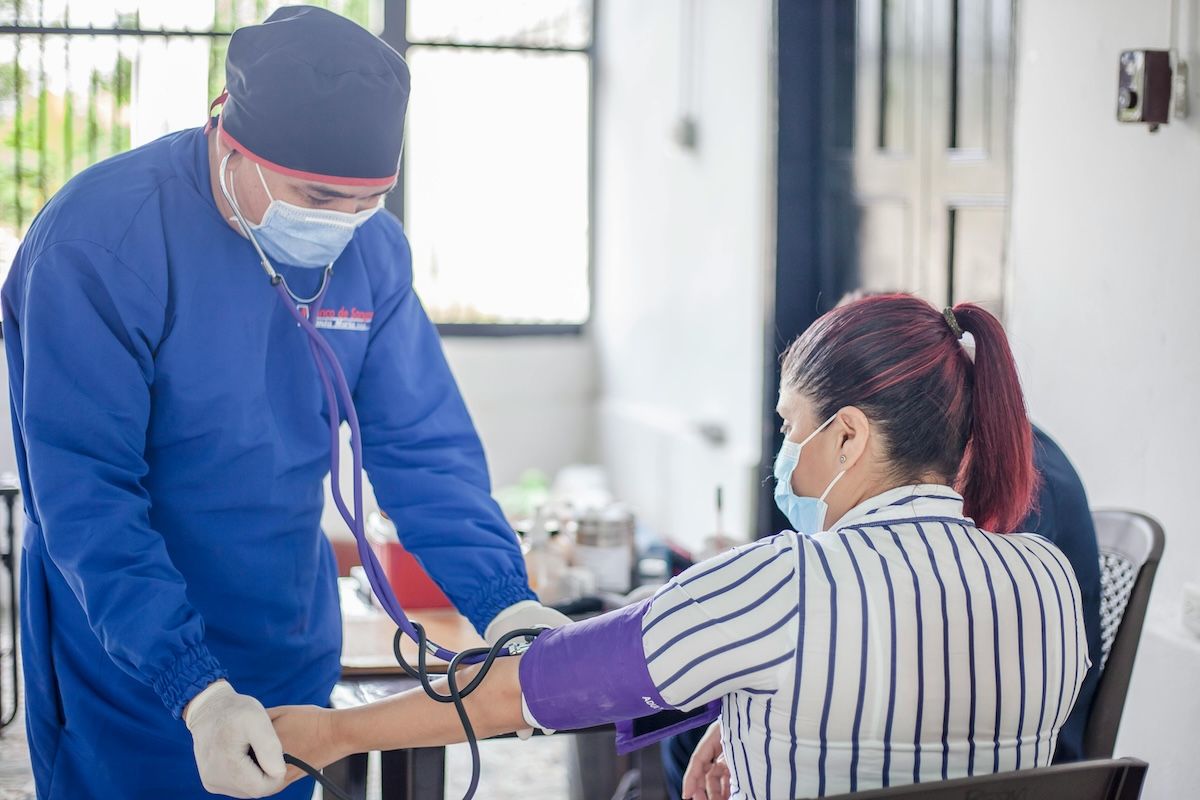Can Medical Assistants Give Injections or Shots in 2026?
Prospective medical assistant students often struggle with uncertainty about the clinical tasks they'll be expected to perform, especially when it comes to administering injections or shots. This confusion can leave them unsure about what their training will entail and how they can best prepare for their roles. With the healthcare sector growing rapidly, including a 60% rise in patient visits at urgent care centers between 2019 and 2020, it is more important than ever for students to gain a clear understanding of their responsibilities.
This article, prepared by experts in career planning, will address whether can medical assistants give injections or shots in 2026. We'll clarify the required training, state-specific regulations, and factors that influence this role, giving you the insights needed to plan your medical career with confidence.
Key Things You Should Know About Medical Assistants Giving Injections or Shots
- Medical assistants can legally give injections, but the legality and requirements vary by state, with some states requiring specific training and supervision.
- Medical assistants are typically authorized to give intramuscular and subcutaneous injections under supervision, but intravenous injections are generally not permitted.
- Medical assistants must be supervised by licensed healthcare providers, with the level of supervision varying based on state laws and the specific clinical setting.
Table of Contents
- Can medical assistants legally give injections in 2026?
- What types of injections can medical assistants give?
- What training do medical assistants need to give injections?
- What skills help medical assistants succeed at giving injections?
- Who supervises medical assistants when they give injections?
- Does giving injections affect a medical assistant's salary?
- Are there cost-effective online education options to advance your career?
- Can advanced degree programs enhance injection expertise and career progression?
- How can medical assistants alleviate patient anxiety about injections?
- How do injection duties differ by work setting?
- What are the risks and safety protocols for medical assistants giving injections?
- What is the job outlook for medical assistants who give injections?
- Other Things You Should Know About Medical Assistants Giving Injections or Shots
Can medical assistants legally give injections in 2026?
Medical assistants can legally give injections in 2026, but laws vary by state.
Many states allow medical assistants to administer injections, such as vaccines or medications, if they have completed approved training and work under supervision. For example, in California, MAs can administer injections under the supervision of a physician or podiatrist after meeting specific training requirements (California Department of Industrial Relations). In Florida, MAs may administer certain injections if a licensed physician is directly supervising them.
Some states have stricter rules or require additional certifications. New York, for instance, recently updated its laws to allow MAs to administer vaccines under proper supervision, as long as they are trained.
Work setting also matters. Clinics, hospitals, or private practices may establish their own policies, which can be more restrictive than state guidelines.
Because rules vary from state to state, future medical assistants need to check their state’s official medical board or regulatory agency for clear guidance. This ensures they meet local legal and training requirements before performing clinical tasks such as injections.
But how about drawing blood? Can medical assistants draw blood? We have a separate article that answers this question.
What types of injections can medical assistants give?
Medical assistants can typically give intramuscular (IM) and subcutaneous (SC) injections under the supervision of licensed healthcare providers.
These types of injections are common in outpatient clinics, family practices, and urgent care settings. They enable MAs to support preventive care and manage chronic conditions efficiently.
Common Types of Injections MAs Can Give
Medical assistants are trained to give certain types of injections as part of their clinical responsibilities.
- Intramuscular (IM) injections: Delivered deep into the muscle for quick absorption. Common for vaccines like flu and tetanus.
- Subcutaneous (SC) injections: Injected into the fat layer under the skin and used for medications like insulin and some vaccines.
Medical assistants must complete proper training before performing these procedures. Their responsibilities often increase in settings like urgent care centers, which saw a 60% rise in patient visits between 2019 and 2020.
Restrictions
Intravenous (IV) injections are usually not allowed for MAs. These require advanced training and are typically done by registered nurses or licensed professionals.
Because rules differ by state and employer, MAs should always check their state's regulations and workplace policies to understand their injection-related duties.
What training do medical assistants need to give injections?
Many students often ask, can medical assistants give injections? The answer really depends on the state regulations and the specific training they’ve completed. That said, in most cases, medical assistants are fully trained and authorized to administer injections as part of their role.
Medical assistants need formal education, supervised practice, and often certification to safely and legally give injections.
Most medical assistant training programs cover key areas like anatomy, pharmacology, and clinical procedures. A vital part of this education is hands-on experience, where students practice real-world clinical skills under the supervision of experts.
Key Training Components
Medical assistants must complete specific clinical and educational steps to become qualified to give injections.
- Clinical externship: Typically involves around 200 hours of supervised practice, including intramuscular (IM), subcutaneous (SC), and intradermal (ID) injections.
- State-specific training: Some states have detailed requirements. For example, California mandates 10 hours of injection training and at least 10 supervised injections of each type.
Do medical assistants need a license? No. After graduation, many medical assistants pursue certification to validate their skills. The Certified Clinical Medical Assistant (CCMA) exam, offered by the National Healthcareer Association, has a pass rate of 77%, reflecting the standard of training achieved.
Some programs also include immunization-specific training, equipping MAs with the confidence to administer vaccines accurately. For those considering further educational opportunities, ADN to MSN bridge programs could be a beneficial route for advancing nursing careers, offering an accelerated pathway to higher qualifications in healthcare.

What skills help medical assistants succeed at giving injections?
Medical assistants succeed at giving injections by combining precise technical ability with strong interpersonal skills and ongoing practice.
Core Skills for Successful Injections
Medical assistants need a mix of technical and interpersonal skills to perform injections successfully and safely.
- Technical skills: Proper technique, knowledge of human anatomy, and safe use of syringes and needles are essential. These are taught during training and strengthened with real-world experience.
- Soft skills: Communication and empathy help medical assistants explain procedures, ease patient anxiety, and create a more comfortable experience.
For those interested in expanding their career opportunities, pursuing the cheapest medical billing and coding program could also be a practical and cost-effective way to enhance qualifications and open up new paths in the healthcare field.
Why Experience Matters
Can medical assistants give injections? The answer is yes. However, experience plays a crucial role in making sure they can administer injections safely and effectively. As they gain more experience, the likelihood of errors decreases, ensuring better patient care overall.
With each year of experience, the risk of injection errors decreases by 11%, and the rate of serious errors drops by 18.5%, according to clinical performance data.
Continued professional development, such as attending skills workshops or earning updated certifications, ensures that medical assistants stay confident, competent, and up to date with the latest safety standards. These efforts directly contribute to better patient outcomes and more efficient care.
You can also advance and move up the hierarchical ladder and become an RN and then an advanced practice registered nurse (APRN). Check out our article on advanced practice registered nurse vs nurse practitioner (NP) if these two confuse you.
Who supervises medical assistants when they give injections?
Medical assistants must be supervised by licensed healthcare providers when administering injections, and the level of supervision depends on state laws and the specific clinical setting.
In answering the question, can medical assistants give injections, the level of supervision is crucial to ensure safety and compliance with state regulations.
Supervision requirements often include:
- Direct or general supervision: Some states require the provider to be physically present, while others only need them to be readily available.
- Qualified supervisors: Typically, a physician, nurse practitioner, or physician assistant must oversee injection duties.
Speaking of NP, is a DNP required for nurse practitioners?
Delegation and oversight
Delegation and oversight are essential parts of the supervision process when medical assistants give injections.
- Supervisors must evaluate the MA’s competence before delegating tasks.
- Improper delegation or lack of oversight can result in legal liability for both the MA and the provider.
Supervision also varies by facility type. Hospitals tend to follow stricter supervision protocols, while outpatient clinics may allow more flexibility, as long as they follow state laws and employer policies.
For reliable guidance, prospective medical assistants should review their state’s regulations on medical delegation and clinical supervision.
Does giving injections affect a medical assistant's salary?
Medical assistants (MAs) who are trained to give injections often earn higher salaries compared to those who focus solely on administrative tasks.
In the United States, MAs who perform clinical duties, such as administering injections, tend to earn more than those in purely administrative roles. For instance, certified clinical medical assistants typically earn an average annual salary of $42,918, while non-certified medical assistants (MAs) earn approximately $38,040 per year. This salary difference is mainly due to the additional responsibilities and specialized skills required for performing clinical tasks like injections.
Injection skills are often viewed as a specialized ability, making MAs more competitive in the job market. This can lead to higher pay and even bonuses. Experience also plays a significant role; MAs with over 10 years of experience can see a pay increase of up to 20% compared to those just starting in the field.
If you’re looking to expand your career options, pursuing a library science degree could also open up new pathways in healthcare-related fields.

Are there cost-effective online education options to advance your career?
By obtaining additional education, medical assistants can enhance clinical proficiency and open doors to advanced roles. Accredited online courses offer a flexible, affordable pathway to update technical skills and meet evolving industry standards without compromising quality. These programs focus on practical training that complements in-person experiences, ensuring compliance with state requirements and safety protocols. Explore medical assistant programs online for options that provide cost-effective education while sharpening competencies in clinical settings.
Can advanced degree programs enhance injection expertise and career progression?
Advanced certifications and degree programs provide an opportunity to deepen clinical knowledge and refine injection techniques beyond standard training. These programs focus on rigorous coursework in pharmacology, patient safety, and advanced clinical procedures, which can translate into improved precision and confidence when administering injections. Additionally, pursuing specialized educational pathways can open doors to leadership roles and broader responsibilities in healthcare. For example, enrolling in a fast track online PharmD program offers an accelerated route to advanced clinical practice and deeper insights into medication management, equipping professionals with the competencies needed for progressive career advancement.
How can medical assistants alleviate patient anxiety about injections?
Medical assistants can adopt targeted communication techniques to help patients overcome concerns related to injections. By explaining the procedure in clear, concise language and addressing potential side effects proactively, MAs create a supportive environment that builds patient trust. Utilizing empathetic body language and active listening strategies, they minimize anxiety and foster informed decision-making. Emphasizing safety protocols and the simplicity of the technique helps reassure patients. Additionally, continuous professional development — including programs that may complement clinical skills with broader biological knowledge, such as the most affordable online biology degree accredited — further equips medical assistants to address patient concerns confidently.
How do injection duties differ by work setting?
Medical assistants (MAs) perform various injection duties depending on their work setting, including pediatric offices, urgent care centers, private practices, and hospitals.
Pediatric Offices
MAs in pediatric settings often handle routine immunizations, including vaccines for infants and children. They may also assist with allergy testing and administer allergy shots. Given the frequency of vaccinations in this field, medical assistants (MAs) are typically trained to administer these injections regularly.
Urgent Care Centers
MAs in urgent care centers may administer injections, such as flu shots or other vaccines. However, the scope of their duties can vary by state regulations. In some states, MAs are permitted to give injections under the supervision of a licensed healthcare provider, while in others, they may have more limited responsibilities.
Private Practices
In private medical practices, MAs often perform a wide range of duties, including administering injections. The specific tasks can vary depending on the practice's specialty and state regulations. For example, in allergy or primary care practices, medical assistants (MAs) are more likely to give injections as part of their routine duties. Exploring the easiest PA schools to get into can be a great way to advance your career in healthcare, especially if you’re looking to broaden your skills and responsibilities in clinical settings.
Hospitals
In hospital settings, MAs may assist with various clinical tasks, including administering injections. However, their responsibilities are often more specialized and may require additional training and certification. Hospital policies and state regulations determine the scope of their duties. For those asking can medical assistants give injections, it largely depends on these regulations and their specific training.
What are the risks and safety protocols for medical assistants giving injections?
Medical assistants (MAs) face risks, such as needlestick injuries and the transmission of infections, when administering injections. However, these risks can be minimized by following strict safety protocols.
Needlestick Injuries
Approximately 385,000 needlestick and sharps-related injuries occur annually among hospital-based healthcare personnel in the United States. Medical assistants (MAs) are trained to handle such incidents by immediately washing the area with soap and water, reporting the injury, and following post-exposure protocols.
Infection Control
MAs adhere to infection control practices, including proper hand hygiene and the use of personal protective equipment (PPE). Compliance rates for hand hygiene among MAs have been reported at 91%, indicating a strong adherence to protocols.
Injection Site Reactions
Common reactions include pain, redness, and swelling at the injection site, occurring in over 70% of cases. Severe adverse events are rare but can happen.
Safety Protocols
MAs follow guidelines such as using each needle and syringe only once and disposing of them properly to prevent disease transmission. They also participate in training programs to stay updated on safe injection practices.
So, for anyone wondering can medical assistants give injections, it’s important to note that following these safety protocols is key to ensuring a safe and effective process for both the patient and the medical assistant.
What is the job outlook for medical assistants who give injections?
Medical assistants (MAs) trained in administering injections are in high demand, with a strong job outlook across various healthcare settings.
According to the U.S. Bureau of Labor Statistics, employment for medical assistants is projected to grow 15% from 2023 to 2033, which is much faster than the average growth rate for all occupations. This growth is driven by an aging population and increased demand for preventive medical services, including vaccinations.
MAs with injection skills are particularly valuable in outpatient care centers, private practices, and urgent care clinics. For instance, 99% of urgent care centers employ medical assistants, reflecting the critical role they play in these settings . Their ability to administer injections allows for more efficient patient care and supports the growing emphasis on preventive health measures.
For those considering further education, PTA online programs may be a good option to expand your skill set and enhance career opportunities in the healthcare field.

Here’s What Graduates Have to Say about Medical Assistants Giving Injections or Shots
Administering injections has become a standard part of my responsibilities as a medical assistant. It’s fulfilling to know that my skills help ensure patients get the care they need. I feel competent and confident every time I give an injection. — Jeremy
At first, giving injections was intimidating, but with practice, I’ve gained a lot of confidence. Being trusted with this aspect of patient care has made me feel more connected to the work I do, and I’m proud to see how it helps patients. — Sonya
Giving injections is a task I’ve become comfortable with after receiving solid training. It’s rewarding to know that my role in patient care is an important one, and it’s satisfying to see patients feeling at ease under my care. — Trell
Key Findings
- Urgent care centers saw a 60% increase in patient visits between 2019 and 2020.
- The Certified Clinical Medical Assistant (CCMA) exam has a pass rate of 77%, reflecting the standard of training medical assistants undergo.
- Approximately 385,000 needlestick and sharps-related injuries occur annually among healthcare personnel in U.S. hospitals.
- Medical assistants have a 91% compliance rate for hand hygiene, indicating strong adherence to infection control protocols.
- Employment for medical assistants is projected to grow 15% from 2023 to 2033, driven by the increasing demand for preventive medical services, such as vaccinations.
Other Things You Should Know About Medical Assistants Giving Injections or Shots
Can medical assistants refuse to give injections?
Medical assistants can refuse to administer injections if they feel unqualified or uncomfortable with the task. While many states permit medical assistants to give non-intravenous injections under physician supervision, refusal is acceptable if the assistant lacks confidence or proper training. In such cases, it's essential to communicate with the supervising physician to ensure patient care isn't compromised. Employers should respect these decisions and provide additional training or alternative duties as needed.
How does medical assistant injection training compare to nursing?
Medical assistants receive focused training on administering injections, typically as part of a 9–12 month diploma or certificate program. This training focuses on practical skills for administering routine injections under supervision. In contrast, nurses undergo more extensive education, earning an associate’s or bachelor’s degree, which includes comprehensive courses in pharmacology and patient assessment. While both roles may involve giving injections, nurses are trained to handle more complex scenarios and adverse reactions. Medical assistants' injection training is more task-specific, whereas nursing education encompasses a broader range of clinical competencies.
What continuing education options cover injection skills for MAs?
Medical assistants can enhance their injection skills through various accredited continuing education (CE) programs. For instance, the American Association of Medical Assistants (AAMA) offers CEUs focused on medication and vaccine administration, covering topics like drug classifications and injection techniques. Additionally, programs like PracticalCME offer hands-on training in Botox, dermal fillers, and PRP injections, providing CME credits upon completion. These courses are designed to ensure medical assistants stay current with best practices in injection procedures.
What are the future trends in injection responsibilities for medical assistants?
Medical assistants' responsibilities for administering injections are expanding due to technological advancements and evolving healthcare needs. Emerging trends include the integration of virtual reality (VR) and augmented reality (AR) in training, enhancing skill retention and procedural accuracy. Additionally, regulatory bodies are implementing competency assessments to ensure proficiency in injection techniques. The rise of telehealth services necessitates remote education and skill validation. A focus on cultural sensitivity and communication skills is also becoming integral to training programs. These developments aim to equip medical assistants with the necessary tools to meet the demands of modern patient care.
References:
- Florida Health Care Academy. (n.d.). Can a medical assistant give shots? State-by-State guide. https://www.fhcaorlando.com/blog/can-medical-assistants-give-shots
- American Career College. (n.d.). How Long is a Medical Assistant Program? Complete Training Guide. https://americancareercollege.edu/blog/how-long-is-medical-assistant-program
- Medical Assistant Scope of practice by state | Stepful. (n.d.). https://www.stepful.com/post/medical-assistant-scope-of-practice-by-state
- A learning experience designed for student success. (n.d.). [Video]. https://www.pennfoster.edu/programs/healthcare/medical-assistant-career-diploma
- NHA Certified Clinical Medical Assistant (CCMA) Guide. (n.d.). https://www.stepful.com/post/certified-clinical-medical-assistant
- Medical Assistant Training | Immunize. (n.d.). https://immunize.utah.gov/medical-assistant-training
- American CPR Care Association. (2024, May 29). Essential Soft Skills for Healthcare Assistants: a guide. CPR First Aid Certification | Healthcare CPR Training. https://cprcare.com/blog/soft-skills-you-need-for-patient-care-as-a-healthcare-assistant
- Itpartners. (2024, January 2). Why are Soft Skills in Healthcare Important? Case Western Reserve University MBA. https://onlineprograms.case.edu/mba/blog/why-soft-skills-are-important-in-healthcare
- Sancho-Cantus, D., Cubero-Plazas, L., Navas, M. B., Castellano-Rioja, E., & Ros, M. C. (2023). Importance of Soft Skills in Health Sciences Students and Their Repercussion after the COVID-19 Epidemic: Scoping Review. International Journal of Environmental Research and Public Health, 20(6), 4901. https://doi.org/10.3390/ijerph20064901
- The importance of soft skills in healthcare careers. (n.d.). https://cetweb.edu/blog/the-importance-of-soft-skills-in-healthcare-careers
- AAMA Home. (n.d.). https://www.aama-ntl.org/
- Halliday, J. (2025, April 21). Gen Z students in Manchester to learn ‘soft skills’ such as empathy and time management. The Guardian. https://www.theguardian.com/society/2025/apr/21/gen-z-students-in-manchester-to-learn-soft-skills-such-as-empathy-and-time-management
- Westbrook, J. I., Rob, M. I., Woods, A., & Parry, D. (2011). Errors in the administration of intravenous medications in hospital and the role of correct procedures and nurse experience. BMJ Quality & Safety, 20(12), 1027–1034. https://doi.org/10.1136/bmjqs-2011-000089
- AMA EdHub. (n.d.). Health Care Workforce: Medical Assistant Professional Development. https://edhub.ama-assn.org/steps-forward/module/2702558
- Payerchin, R. (2022, October 11). MGMA 2022: What duties can medical assistants take on? Some principles for delegating. Physicians Practice. https://www.physicianspractice.com/view/what-duties-can-medical-assistants-take-on-some-principles-for-delegating
- Payerchin, R. (2022c, October 12). What duties can medical assistants take on? Some principles for delegating. Contemporary OB/GYN. https://www.contemporaryobgyn.net/view/what-duties-can-medical-assistants-take-on-some-principles-for-delegating
- Texas Board of Nursing. (n.d.). Frequently Asked Questions - Delegation. https://www.bon.texas.gov/faq_delegation.asp
- Company, D. K. H. M. R. S. P. S. R. M. D. (2017, October 6). The role of the medical assistant in your office practice. https://www.thedoctors.com/articles/the-role-of-the-medical-assistant-in-your-office-practice
- RCMA News & Information | Vicarious liability for medical assistant negligence. (2024, September 18). https://www.rcmadocs.org/news-events/news/vicarious-liability-for-medical-assistant-negligence2.aspx
- Understanding vicarious liability and implementing strategies to reduce risks | MedPro Group. (n.d.). https://www.medpro.com/understanding-vicarious-liability
- Salary.com. (n.d.-b). Certified Clinical Medical Assistant Salary | Salary.com. https://www.salary.com/research/salary/position/certified-clinical-medical-assistant-hourly-wages
- Salary.com. (n.d.-c). Certified Clinical Medical Assistant Salary | Salary.com. https://www.salary.com/research/salary/position/certified-clinical-medical-assistant-salary
- Average medical assistant salary in United States (Hourly and annually). (n.d.). https://www.stepful.com/medical-assistant-salaries/united-states
- Alshehri, S., Kayal, M., Almshhad, H. A., Dirar, Q., AlKattan, W., Shibl, A., & Ouban, A. (2023). The incidence of needlestick and sharps injuries among healthcare workers in a tertiary care hospital: a Cross-Sectional study. Cureus. https://doi.org/10.7759/cureus.38097
- ETool : Hospitals - Patient Care Unit - Needlestick/Sharps Injuries | Occupational Safety and Health Administration. (n.d.). https://www.osha.gov/etools/hospitals/patient-care-unit/needlestick-sharps-injuries
- Ashinyo, M. E., Dubik, S. D., Duti, V., Amegah, K. E., Ashinyo, A., Asare, B. A., Ackon, A. A., Akoriyea, S. K., & Kuma-Aboagye, P. (2021). Infection prevention and control compliance among exposed healthcare workers in COVID-19 treatment centers in Ghana: A descriptive cross-sectional study. PLoS ONE, 16(3), e0248282. https://doi.org/10.1371/journal.pone.0248282
- Siju, J., Anagboso, U., Vernet, E., Moss, M., Javaid, W., & Cassano, K. (2023). Implementation of a quality improvement project using the patient as the observer to improve hand hygiene compliance in ambulatory care practices. Journal of Hospital Infection, 140, 34–39. https://doi.org/10.1016/j.jhin.2023.08.001
- Yamazaki, S., Watanabe, K., Okuda, Y., Urushihara, M., Koshikawa, H., Chiba, H., Yahaba, M., Taniguchi, T., Nakada, T., Nakajima, H., Ishii, I., & Igari, H. (2022). Adverse effect investigation using application software after vaccination against SARS-CoV-2 for healthcare workers. Journal of Infection and Chemotherapy, 28(6), 791–796. https://doi.org/10.1016/j.jiac.2022.02.020
- Safe injection practices and your health. (2024, March 26). Injection Safety. https://www.cdc.gov/injection-safety/about/index.html
- Florida Health Care Academy. (n.d.-a). Are medical assistants in demand? Job outlook. https://www.fhcaorlando.com/blog/are-medical-assistants-in-demand
- Medical assistants. (2025, April 18). Bureau of Labor Statistics. https://www.bls.gov/ooh/healthcare/medical-assistants.htm


































